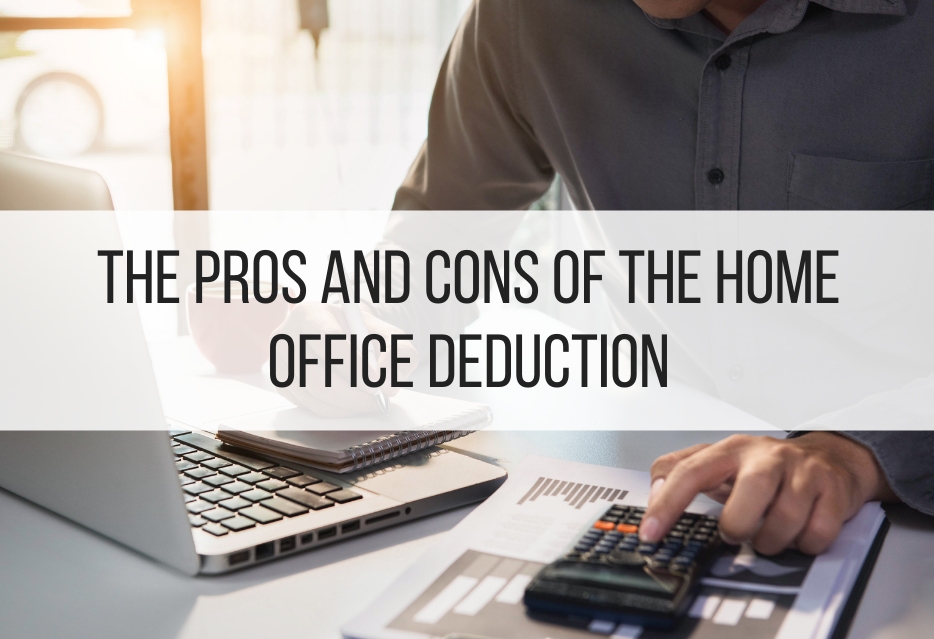
With so many people working from home during the pandemic, the home office deduction has become a hot topic in the tax world. For taxpayers who are self-employed, this deduction can be a great way to lower overall taxes. But the deduction is loaded with specific requirements and consequences. The decision of whether to take it requires careful consideration.
What is the home office deduction?
The home office deduction allows certain costs associated with a business owner’s home workspace to be treated as deductible work-related expenses for federal income tax purposes. The home office doesn’t need to be an entire room, but it does need to be a clearly identifiable space, such as a corner of a living room. The calculations used to determine the amount of the deduction rely on the square footage of the space—see below for more details on how the deduction is calculated.
What is required to qualify for the home office deduction?
The home office deduction is available to renters and homeowners alike. Perhaps most important for people who are working remotely for an employer, the deduction is only available to people who are self-employed—working remotely for someone else most likely does not qualify you for the deduction.
To qualify for the deduction a home office must meet two requirements:
1. Regular and exclusive use.
The space must be used only for business purposes, and it needs to be used regularly. A desk kept at a vacation home may not be used with sufficient regularity to qualify. Likewise, a desk at home that also gets used for gaming might not meet the exclusivity requirement, because the office space is also being used for personal purposes.
The IRS strictly enforces the exclusive use requirement. For many people, this requirement disqualifies their home office space from qualifying for the deduction. If the space used for the office is in a larger room and the non-business use of that room can spill over into the office space, taking the deduction becomes much riskier.
2. Principal place of business.
To qualify, the home office also needs to be the principal place of business. It’s fine to have another location or to work remotely, for example by making sales calls or occasionally using a shared workspace. But the home office must be the primary location of the business.
For professionals who split time between home and other locations, the IRS considers the relative importance of activities performed at each location, and the amount of time spent at each place. A qualified home office must be the primary place where the taxpayer conducts “substantial administrative or management activities.”
How is the home office deduction calculated?
The IRS offers taxpayers two methods for calculating a home office deduction:
- Simplified option
The simplified option provides a standard deduction of $5 per square foot of home used for business. The taxpayer using the simplified option may claim additional itemized deductions such as the portion of mortgage interest and real estate taxes that can be ascribed to the space.
- Regular method
The conventional approach to the home office deduction requires the taxpayer to do more calculations, but in some cases can result in a larger deduction. Rather than taking a standard per-square-foot deduction, the regular method involves calculating the actual expenses associated with the office space. The taxpayer calculates the percentage of the total home devoted to business and uses that ratio to claim expenses for mortgage interest, insurance, utilities, and more.
The drawbacks of the home office deduction
Each of the methods described above are significantly more complex under the hood. That’s one reason why many taxpayers elect to ignore the home office deduction: figuring out the appropriate amount of the claim can be complex and time-consuming, and in some cases the net result can be little or no tax savings.
The lack of “punch” in the home office deduction has to do with how it interacts with the business’s profits and losses. A taxpayer can only use the deduction to offset profit. If the business has generated a loss, the deduction may not be available. In the event the business’s profits were less than the amount of the home office deduction, the remainder can be carried forward into future tax years.
The most significant deterrent for many taxpayers who are considering the home office deduction comes from its impact on the tax consequences of selling a primary residence. For a taxpayer who owns the home where the office is located, any amounts claimed as a home office deduction are placed outside the taxable capital gains exclusion that applies to the sale of a primary residence. As a result, the home office can end up costing more than the deduction it provides, depending on the amount of gain from the home sale.
Is the home office deduction right for you?
Despite the drawbacks the home office deduction can still be the right option for some taxpayers. Figuring out whether it’s the right choice is much easier with professional advice. The tax professionals at Ferguson Timar will be happy to help you make heads and tails of this complicated deduction.
To get started on your taxes for 2020 and the future, call Ferguson Timar today at (714) 204-0100 or send us an email. We look forward to working with you.
